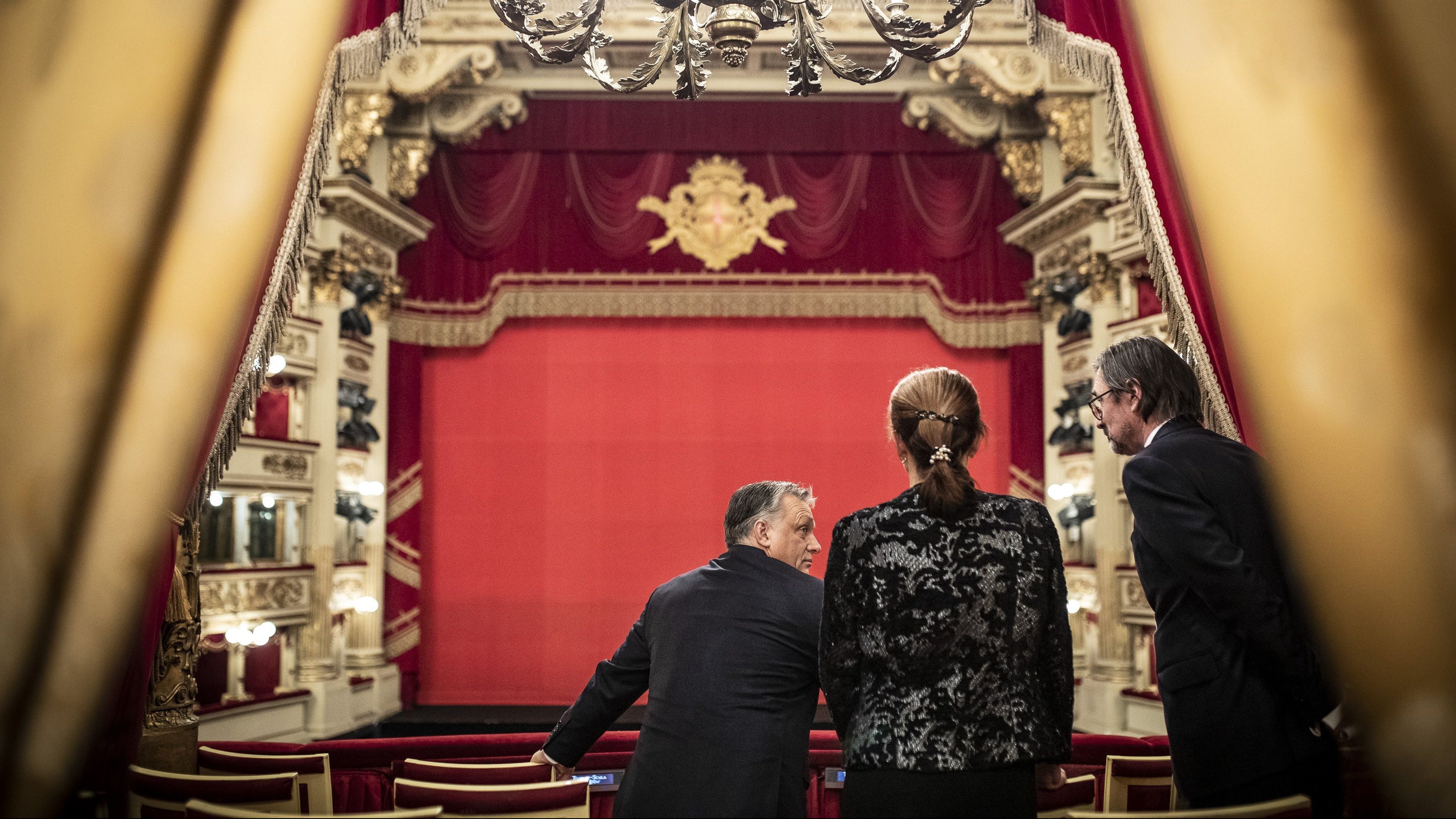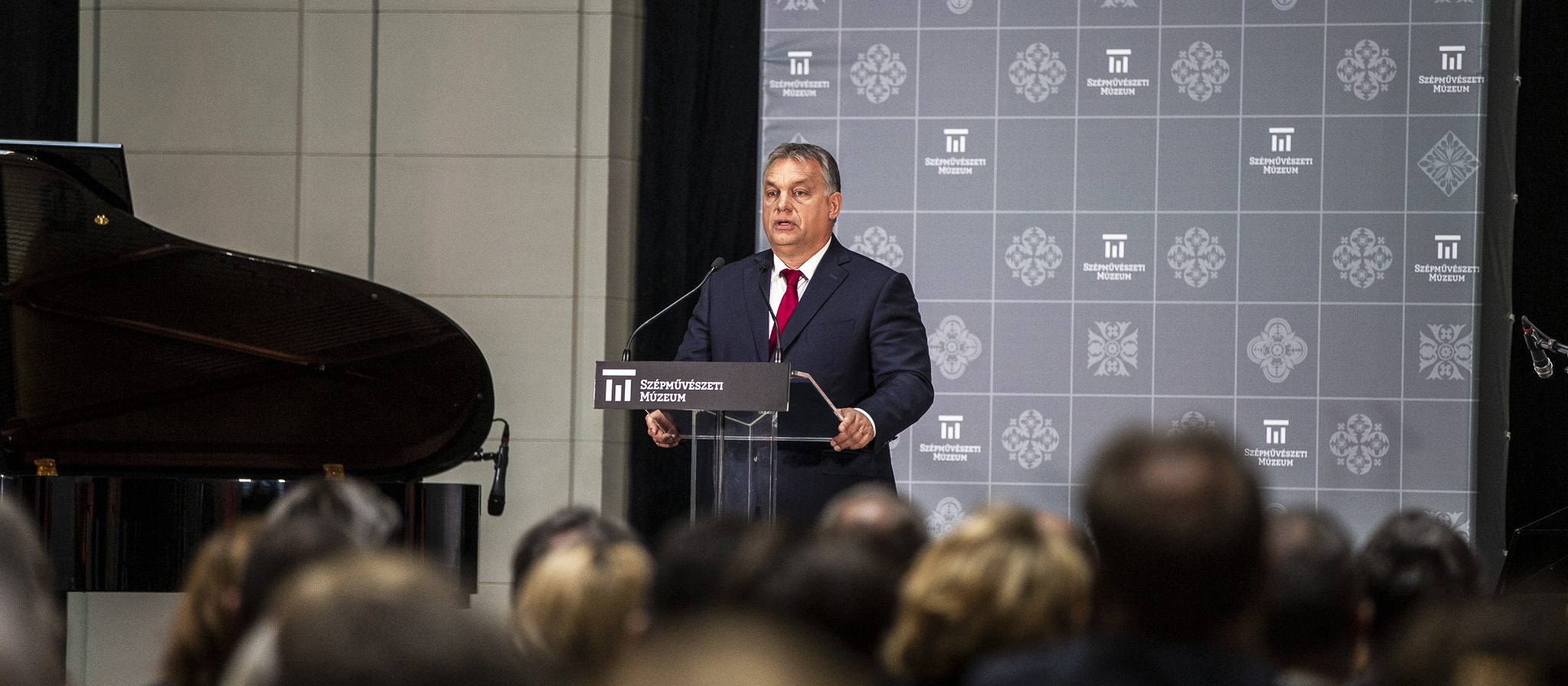
Ladies and Gentlemen,
If you will allow me, I will not ask you to listen to me greeting all our guests individually by name – although that would be fitting. Thank you for coming; it is good to see so many of you here today. We are here to repay a debt which has been outstanding for over seventy years, by returning the Romanesque Hall of the Museum of Fine Arts to the Hungarian public in its former glory. Alongside this, 40 per cent of the museum has been completely refurbished. In addition, we have passed a significant milestone in the implementation of the Liget Budapest (City Park) Programme, which is currently Europe’s largest cultural urban development project.
Ladies and Gentlemen,
It is an old wisdom that size may not only be measured in square kilometres, millions of people or numbers of tank divisions. In contrast to the horizontal interpretation of the size, we Hungarians are believers in the greatness of striving to reach new heights. Such greatness is of a spiritual nature. Our forebears understood this, and took it seriously. This is how Heroes’ Square was created, together with the Millennium Monument, and beyond it the City Park. This is why it was decided, in the year of the Hungarian Millennium [1896], to build the Museum of Fine Arts. The Hungarian Millennium celebrations showed that Hungarians had entered the ranks of the world’s confident and ambitious nations. This was the result of a turbulent history of a thousand years and their capabilities demonstrated in the world of science and culture. We never measured our greatness in terms of being able to take something from others, but in terms of what we can give to the world of science and culture. We are a people who have always given more to the world than we have taken from it. Our Fundamental Law states that “We are proud that our people has over the centuries defended Europe in a series of struggles and enriched Europe’s common values with its talent and diligence […] We believe that our national culture is a rich contribution to the diversity of European unity.”
Ladies and Gentlemen,
It is also part of Hungarian history that we regularly see the emergence of people who are repelled by the idea of national greatness. They do not use the national standards of the Hungarian people, but want to judge us according to foreign standards. Such political regimes left their deep imprint on the building of the Museum of Fine Arts, and on the City Park. After World War II, Buda’s Castle District was treated with contempt, the damaged Romanesque Hall of the Museum of Fine Arts was turned into a storeroom, and the City Park was reduced to being a backdrop for “parading dictatorship”. The reopening of the Museum of Fine Arts – now complete with the refurbished Romanesque Hall – signals the end of an era of cultural policy which aped others, and which was therefore mediocre. The ideals left to us from the twentieth century can hardly pass muster today: on a daily basis we see that they are in decline, obsolete and decaying. Our hope is that we Hungarians will find our way back to our own path, that we will again place our faith in enduring ideals, and that there will be a shared order towards which we can all freely aspire. The Museum of Fine Arts embodies this hope. It is an open affirmation that we are a European and Christian people which is proud of its national identity.
Ladies and Gentlemen,
Today the western half Europe is waging a cultural war on its own past and on its Christian roots. The situation is different here: we do not see nation, faith and family as fossils which are embedded here, but far more as the inspiration for the most profound human feelings and passions, and as the source of beauty and goodness. We live at peace with our own history and our own culture – in other words, with ourselves. In today’s world this is a great gift; let us acknowledge its value. Therefore we should not be idle – and, if needs be, let us enter the fray in order to defend our culture. If we want there to be a Christian, Hungarian and European culture here in a hundred years’ time, now is the time when – calmly and with dispassionate purpose, not retreating an inch – we must defend our cultural essence, identity and sovereignty in the vortex of Europe’s cultural war. We have brought the Seuso Treasure back home. We are renewing our cultural institutions: we have renovated the Hungarian Heritage House, the Castle Garden Bazaar and the Music Academy. The provinces are also being mobilised: the Hungarian Open Air Museum, the Royal Palace of Gödöllő, the Grassalkovich Mansion in Hatvan, the Eszterházy Palace and the Rákóczi Museum in Sárospatak have all been restored. Our efforts have not been without effect: in 2017 the number of people visiting our museums was more than the entire population of Hungary.
Ladies and Gentlemen,
Today we have not only the courage, but also the strength to continue the tradition of the Hungarian Millennium. Here in the environs of the City Park in 1896 a unique cultural space was built. Preserving its traditions, we have made a commitment to take and guide this exceptional cultural space into the 21st century. We shall heal the wounds. We have restored the dignity of the Romanesque Hall, the site of the old party parades will again be part of the City Park, and we shall also rebuild the destroyed City Park Theatre. A new Museum of Ethnography, a new National Gallery and a House of Hungarian Music are being built. The former Olof Palme House and the old Transport Museum will also be renovated. We are in Hungary, and naturally 110 years ago projects on such a scale had their own fate. There were some even at the time who said that the building of the Museum of Fine Arts was not national enough or beautiful enough. Time has proved them wrong. That should be enough for us, too.
Ladies and Gentlemen,
Finally, I would like to thank those who worked here during the three years of renovation works. We thank everyone who, through their hard work, made it possible for the flagship of Hungarian culture to again shine in all its former glory. All we can say to the management of the museum is this: may it be as it was of old!

